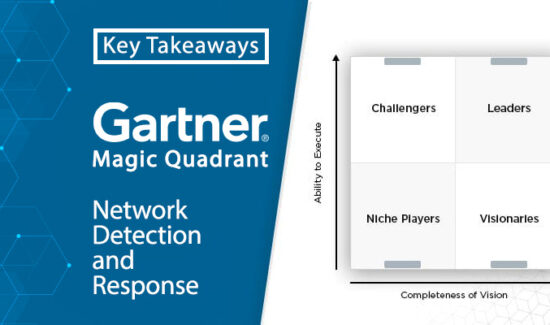Edge Computing: Confronting the Biggest Cyber Threats in 2023


Solutions Review’s Expert Insights Series is a collection of contributed articles written by industry experts in enterprise software categories. Mauricio Pegoraro of Azion walks us through how edge computing is taking the fight to the biggest current-age cyber threats.
 2023 has presented companies of all sizes with a slew of concerning cybersecurity challenges, ranging from data breaches to a massive talent gap to DDoS attacks as acts of warfare. Yet simply understanding what those threats are isn’t sufficient to address them, as it can be hard to plan defenses against all of them individually. Companies need to figure out how to address many threats at once in order to be most effective.
2023 has presented companies of all sizes with a slew of concerning cybersecurity challenges, ranging from data breaches to a massive talent gap to DDoS attacks as acts of warfare. Yet simply understanding what those threats are isn’t sufficient to address them, as it can be hard to plan defenses against all of them individually. Companies need to figure out how to address many threats at once in order to be most effective.
Making the shift to edge computing infrastructure can serve as precisely this kind of defensive juggernaut, allowing companies to protect against many major concerns in one fell swoop. While not a panacea for all concerns, making edge computing part of your tech stack can improve security and leave your organization much better prepared for what 2023 has in store.
Edge Computing: Fighting the Biggest Cyber Threats
Data Breaches
The risk of a bad actor stealing and releasing confidential data is nothing new, but the scale and severity of recent breaches are astonishing — and globally, governments are responding accordingly. Australia sent shockwaves throughout the security community by drastically raising the penalty for data breaches (with a new minimum penalty 25 times greater than the previous maximum). And even if one sets financial risk aside, the reputational damage of a breach can be tremendous. Take the recent ChatGPT breach, which revealed a dark side of the much-discussed chatbot at precisely the time that building a good reputation was most important. Edge computing technology can help to address threats because of its distributed footprint. You can place security technology directly on the edge, which means that it will intercept threats as soon as those threats attempt to enter the network. With edge computing, central infrastructure will need to face threats less often, as many risks will be resolved before they even reach central data servers.
For the best result, you should consider introducing a Web Application Firewall (WAF) at the edge. This security tool can block an array of common threats recognized by organizations like Open Web Application Security Project Foundation. Historically, the most common type of WAF was signature-based, which reacted to known threat patterns but struggled to recognize new dangers. In contrast, the more recent scoring-based WAF systems rely on a case-by-case grading process to evaluate threats. As a result, scoring-based WAFs are better able to evaluate and neutralize potential threats at the edge, while still retaining the capacity to recognize known dangers.
DDoS Attacks and Acts of Cyberwar
Modern warfare has become increasingly digital, and any application is at risk of being caught in the crossfire. Whether part of a massive land war (including Russian cyberattacks against Ukraine) or a spur-of-the-moment response to a controversy (such as a massive wave of DDoS attacks against Australia after a contentious fashion show), it’s clear any organization could become a target at any time.
The edge can play an important protective role because it can help cybersecurity professionals set up defenses and quickly assess the situation to develop a comprehensive plan. Once you’ve set up edge infrastructure, you can stream data from the edge to a SIEM platform to aggregate insights and rapidly obtain an understanding of whether your network is being attacked. And if you decide to enact a lockdown, many modern edge providers allow you to block all incoming requests from a specific country.
If you do fall victim to an attack, maintaining a professional image to your impacted users is just as important as getting your application or website online again. Some edge providers allow you to automatically post and update client-facing troubleshooting updates, helping to avoid confusion and underscoring your dedication to making things right.
Internet of Things
For both industrial and personal use, the web of Internet of Things (IoT) devices continues to grow at a massive rate, opening up potential new attack vectors. IoT-based malware attacks increased by 87 percent in 2022, and by 2025, there will be an estimated 55.7 billion connected IoT devices. And IoT tampering will become less acceptable than ever in the coming years, as ultra-low-latency use cases ,like self-driving cars, will rely heavily on IoT and any delays will pose grave safety hazards.
Because critical IoT devices live at the edge, it’s critical to intercept potential threats at the first point of contact. Edge computing can push protection out to the places where IoT devices live, and benefit IoT networks in other ways, as well. Edge providers are now offering tools that help companies orchestrate the entire edge infrastructure. If you can get a big-picture view and provision, update, and manage cybersecurity features like a WAF at will, you can rapidly adapt to shifting conditions in ways that keep IoT systems safe. This also enables redundancy — even if one set of IoT devices stops working, traffic and data flows can be redirected to other devices for resilient functionality.
Shortage of Employees and Final Thoughts
The talent gap in cybersecurity remains a major concern, both in terms of companies being unable to afford additional staff and unable to find available candidates. According to one estimate, cybercrime will cost companies over $10 trillion by 2025– yet there are more than three million vacant cybersecurity positions.
Remaining efficient with less talent depends heavily on automation, and establishing automation on the edge poses a great opportunity for organizations. Since any potential threats first appear on the edge, knowing how to automate there can resolve concerns as soon as they arise. Once set up, edge infrastructure can automatically block specific incoming requests based on factors such as country (as mentioned before), IP address, or autonomous system numbers. Companies can automate paywalls and other permissions-based access by distributing tokens to users automatically on the edge.
It is now increasingly common to improve efficiency by combining edge computing with serverless technology. This combination allows companies to take advantage of pre-built infrastructure for a faster and less resource-intensive deployment process. Additionally, these platforms often have ready-to-go third-party software integrations for essential cybersecurity functions, so they don’t need to be developed in-house.
There’s no way to fully predict what the rest of 2023 will bring — but being equipped with edge computing technology can help organizations be ready for any possibility. The edge can help identify and block new threats, rapidly access and respond to potential attacks, automate a variety of important security functions, and more — all of which will help organizations stay nimble and ahead of any potential fallout from cyber threats.




















